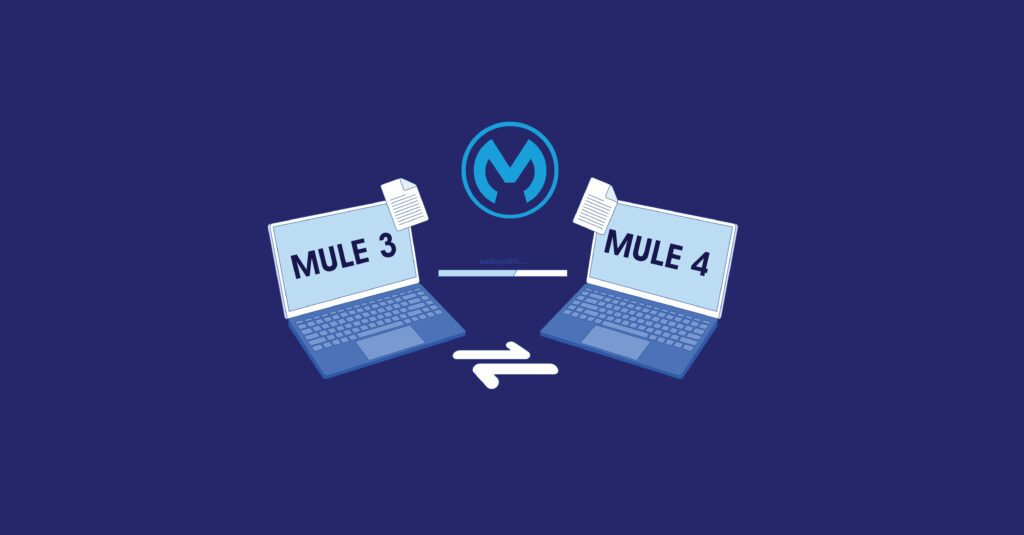With new tech trends being introduced at lightning speed and a new COVID variant making waves worldwide, it is safe to say that digital alternatives to traditional business processes will not become obsolete any time soon.
When it comes to automation, few digital solutions make the lives of IT professionals simpler the way MuleSoft does. The platform allows businesses to automate their workflows and create holistic digital experiences. It relieves your team members from performing manual processes and allows them to enhance their tasks.
MuleSoft also allows you to integrate your software solutions and the data therein to improve your functionality. It lets you sync multiple systems to provide a single, unified platform for your team members.
Like any other digital solution, MuleSoft is upgrading itself and encouraging users to switch to Mule 4. The company will officially discontinue its Mule 3 runtime engine on March 20, 2024. If you are an existing MuleSoft user, you will need to migrate to the new version to continue using the platform seamlessly.
There is no need to hurry
Before understanding the benefits of migrating from Mule 3 to Mule 4, it is important to note that there is no need to rush through the process. Once an official deadline is set, businesses often panic and start migrating their code and data right away.
While it is important to migrate to Mule 4 at the earliest, make sure you follow a systematic process for the same. It is advisable to create an extensive application rationalisation model that allows you and your team to make a slow and steady shift. With the entire year 2023 ahead of you, you can take things slow and maintain an even pace as you switch to newer and better capabilities.
However, do make sure that you make the switch with the help of your MuleSoft partner to prevent the accumulation of technical debt.
Why should you migrate from Mule 3 to Mule 4?
Along with the obvious reason for meeting the official deadline, here are a few reasons why migrating from Mule 3 to Mule 4 is beneficial for your business.
Future-proofing your business
We live in an age where staying relevant in terms of the technologies we implement and the platforms we use is very important. Moving from Mule 3 to Mule 4 allows you to stay in sync with modern tech trends, especially in the realm of software integration and automation. The new and improved capabilities will help you leverage your development investments and bring you a step closer to your goals.
Improved data access
Mule 4 allows users to access their valuable business data for parallel consumption. It is also equipped with better size and space constraints, making data management more effective.
Faster Integrations
If you hate waiting too long for your software integration project to come to fruition, Mule 4 has a solution for you. Switching from Mule 3 to Mule 4 lets you reuse the function flows and components to build a standardised integration at a faster pace. Mule 4 is also a more powerful runtime engine that enhances your system’s performance.
Zero downtime
Mule 4 prevents you from taking any chances when it comes to tackling downtime. It helps you maintain zero downtime with improved error handling and retry logic. This further adds to the speed of your software integration project.
Instead of Java exceptions, Mule 4 uses robust validators to facilitate seamless error handling during the design phase of your integration project. Moreover, Mule 4 comes with a new “Try” scope that helps you handle errors occurring as you make attempts to execute components within the scope. This helps users get hold of any number of errors during the flow. This evades the need to create a new flow, saving you a significant amount of time.
Improved app configuration
Mule 4 helps you leverage managing and configuring integrated app development by syncing up with Maven. All Mule 4 applications will be Maven applications by default, with enhanced and responsive functionalities.
Simplified messaging and event processing
Mule 4 provides users with a more simplified and compact event processing model. It optimises hierarchies and workflows to improve your business processes. Moreover, the message section of Mule 4’s event architecture combines the inbound and outbound properties of Mule 3 under the single category of “Attributes.”
A Mule 4 event facilitates quick and automated creation whenever a change is made to the events, helping you get rid of data discrepancies across all threads.
Improved error handling with DataWeave 2.0
Mule 3 allowed developers to work with DataWeave as well as the Mule Expression Language (MEL) to develop Mule messages. This often led to data inconsistencies and unwanted silos.
Mule 4 provides users with more steadiness and helps them streamline data management with the help of DataWeave 2.0. DataWeave 2.0 pushes all Mule 4 messages into a connector instead of bringing MEL into the picture. Mule 4 also stores all event structures and responses to enhance data transparency throughout a software integration or implementation project.
As opposed to Mule 3, the DataWeave in Mule 4 relieves you of the stress of transforming data objects into Java objects through expressions. It also avoids data caching in memory, as you provide access to specific memories or specific data repositories. This results in faster data streaming, better transparency, and fewer memory lags.



